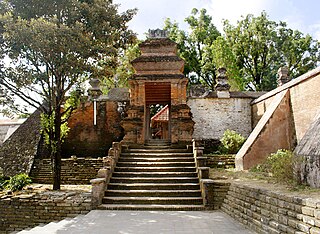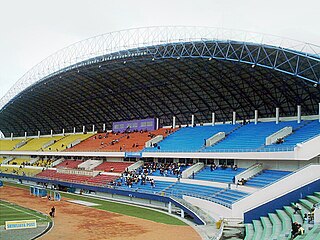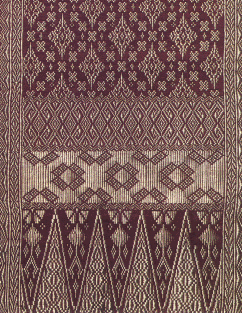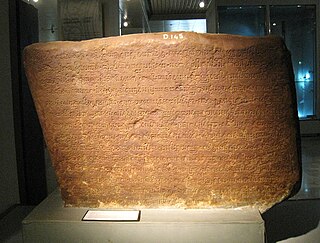
Bandar Seri Begawan is the capital city of Brunei. It is officially a municipal area with an area of 100.36 square kilometres (38.75 sq mi) and an estimated population of 100,700 as of 2007. It is part of Brunei-Muara District, the smallest yet most populous district which is home to over 70 per cent of the country's population. It is the country's largest urban centre and nominally the country's only city. The capital is home to Brunei's seat of government, as well as a commercial and cultural centre. It was formerly known as Brunei Town until it was renamed in 1970 in honour of Sultan Omar Ali Saifuddien III, the 28th Sultan of Brunei and the father of the current Sultan Hassanal Bolkiah.

Palembang is the capital city of the Indonesian province of South Sumatra. The city proper covers 400.61 square kilometres on both banks of the Musi River on the eastern lowland of southern Sumatra. It had a population of 1,668,848 at the 2020 Census. Palembang is the second most populous city in Sumatra, after Medan, and the ninth most populous city in Indonesia.

Srivijaya was a Buddhist thalassocratic empire based on the island of Sumatra, which influenced much of Southeast Asia. Srivijaya was an important centre for the expansion of Buddhism from the 7th to the 12th century AD. Srivijaya was the first polity to dominate much of western Maritime Southeast Asia. Due to its location, the Srivijaya developed complex technology utilizing maritime resources. In addition, its economy became progressively reliant on the booming trade in the region, thus transforming it into a prestige goods-based economy.

South Sumatra is a province of Indonesia. It is located on the southeast of the island of Sumatra, The province spans 91,592.43 km2 (35,364 sq mi) and had a population of 8,467,432 at the 2020 Census. The capital of the province is Palembang. The province borders the provinces of Jambi to the north, Bengkulu to the west and Lampung to the south. The Bangka Strait in the east separates South Sumatra and the island of Bangka, which is part of the Bangka Belitung Islands province. This province is rich in natural resources, such as petroleum, natural gas and coal. The province is inhabited by many different ethnic groups, with Palembang people the largest ethnic group. Most speak Palembang language, which is mutually unintelligible to both Indonesian and local Malay. Other ethnic groups include the Javanese, Sundanese, Minangkabau and Chinese. Most are concentrated in urban areas and are largely immigrants from other parts of Indonesia.

Banda Aceh is the capital and largest city in the province of Aceh, Indonesia. It is located on the island of Sumatra and has an elevation of 35 meters. The city covers an area of 61.36 square kilometers (23.69 sq mi) and had a population of 223,446 people at the 2010 Census, rising to 252,899 at the 2020 Census. The official estimate as at mid 2021 was 255,029.

Imogiri is a royal graveyard complex in Yogyakarta, in south-central Java, Indonesia, as well as a subdistrict under the administration of Bantul Regency. Imogiri is a traditional resting place for the royalty of central Java, including many rulers of the Sultanate of Mataram and of the current houses of Surakarta and Yogyakarta Sultanate. The name Imagiri is derived from Sanskrit Himagiri, which means 'mountain of snow'. The latter is another name for Himalaya.

The Brunei River is a river which flows through Brunei and empties into the Brunei Bay towards the north-east direction. The Istana Nurul Iman, the official residence of the Sultan of Brunei, stands on its banks. The Brunei River is the shortest major river in Brunei. It is the major river basin within the Brunei-Muara District, the smallest but most populous district. It flows through the country's capital Bandar Seri Begawan. It is home to Kampong Ayer, the Brunei's traditional village on stilts above the river water.

Kotagede is a city district (kemantren) and a historic neighborhood in Yogyakarta, Special Region of Yogyakarta, Indonesia. Kotagede contains the remains of the first capital of Mataram Sultanate, established in the 16th century. Some of the remains of the old Kotagede are remains of the palace, the royal cemetery, the royal mosque, and defensive walls and moats. Kotagede is well known internationally by its silver crafting.

Gelora Sriwijaya Stadium, also known as Jakabaring Stadium, is a multi-purpose stadium located in Jakabaring Sport City complex in Palembang, South Sumatra, Indonesia. It is currently used mostly for football matches. The stadium holds 23,000 spectators. The construction began in 2001 and finished in 2004 to host the 2004 Indonesia National Games. The stadium was initially named as Jakabaring stadium after the location of the stadium in southern outskirt of Palembang. However, later the stadium was renamed "Gelora Sriwijaya", to honor and celebrate the 7th—13th century Indonesian empire of Srivijaya. The Third Place Playoff of the 2007 AFC Asian Cup was held in this stadium. The football club Sriwijaya is based at the stadium.

Songket is a Tenun fabric that belongs to the brocade family of textiles of Brunei, Indonesia, Malaysia and Singapore. It is hand-woven in silk or cotton, and intricately patterned with gold or silver threads. The metallic threads stand out against the background cloth to create a shimmering effect. In the weaving process the metallic threads are inserted in between the silk or cotton weft (latitudinal) threads in a technique called supplementary weft weaving technique.

Bukit Seguntang or Bukit Siguntang is a 29–30 metres high small hill located at the northern bank of Musi River and within the vicinity of Palembang, capital city of South Sumatra, Indonesia. It is located around 3 kilometres north from Musi River northern bank and around four kilometres southwest from Palembang city center. The place is considered sacred by the locals and home of many archeological relics believed to be related to Srivijaya Empire, once a dominating political power around Malacca Strait. Today the hill gain status as an archaeological park.
Jakabaring Sport City(sic), also known as Jakabaring Sports Complex is an integrated sports facility complex in Palembang, South Sumatra, Indonesia. The complex is located 5 kilometers southeast of Palembang city center, across the Musi river by the Ampera Bridge in Jakabaring, Seberang Ulu I area.

Srivijaya archaeological park, formerly known as Karanganyar archaeological site, is the ancient remnants of a garden and habitation area near the northern bank of Musi river within Palembang vicinity, South Sumatra, Indonesia. Remnants of ancient man-made canals, moats, ponds and artificial islands discovered in this area suggests the site was related with a 9th-century settlement related to the Srivijaya empire. Several artifacts, such as Buddhist statues, beads, pottery and Chinese ceramics were found in this area, confirming the area was once a dense human habitation.

Javanisation or Javanization is the process in which Javanese culture dominates, assimilates, or influences other cultures in general. The term "Javanise" means "to make or to become Javanese in form, idiom, style, or character." This domination could take place in various aspects; such as cultural, language, politics and social.

The Great Mosque of Palembang, also known as Sultan Mahmud Badaruddin I Great Mosque after the former Sultan of Palembang, is the main mosque of Palembang, the capital of South Sumatra. The mosque is the largest in South Sumatra, and the third largest mosque in Sumatra after the Grand Mosque of West Sumatra and Great Mosque of Pekanbaru.
Palembang is the capital city of South Sumatra province of Indonesia. Currently, this city the oldest existing city in Indonesia, dates back to 7th century. Palembang was once the capital city of Srivijaya, a Malay kingdom which ruled parts of the western archipelago and controlled maritime trade routes especially in the Strait of Malacca. Palembang incorporated into Dutch East Indies in 1825 after the abolishment of Palembang Sultanate. Palembang is chartered as a city on 1 April 1906. Palembang today is the second largest city in Sumatra and the ninth largest city in Indonesia. The city has become host of several international events, including 2011 Southeast Asian Games and 2018 Asian Games.

Balaputradeva Museum, officially the State Museum of South Sumatra Province "Balaputradeva", is an ethnographic museum located in Southern Sumatra's capital Palembang. The museum is the state museum of the Province of South Sumatra. The name Balaputradeva is derived from Balaputra, a 9th century sovereign of Srivijaya kingdom and the former head of the Sailendra dynasty whose main center was located in the vicinity of Palembang. Balaputradeva Museum displays the history and traditions of the province of South Sumatra.

Kuto Besak, also Benteng Kuto Besak is an 18th-century kraton in Palembang, South Sumatra. Kuto Besak was the center of the Sultanate of Palembang before its abolition by the Dutch colonial government. The fort was constructed in 1780 and took seventeen years to complete. Kuto Besak was inaugurated in 1797, marked by the transfer of the royal residence from the older Kuto Lamo to Kuto Besak.
The Sultanate of Palembang Darussalam is a sultanate in Indonesia whose capital was the city of Palembang in the southern part of the Indonesian island of Sumatra. It was proclaimed in 1659 by Susuhunan Abdurrahman (1659–1706) and dissolved by the colonial government of the Dutch East Indies on October 7, 1823. In 1825, its last ruler, Sultan Ahmad Najamuddin, was arrested and sent into exile on the island of Banda Neira in the Moluccas.

















